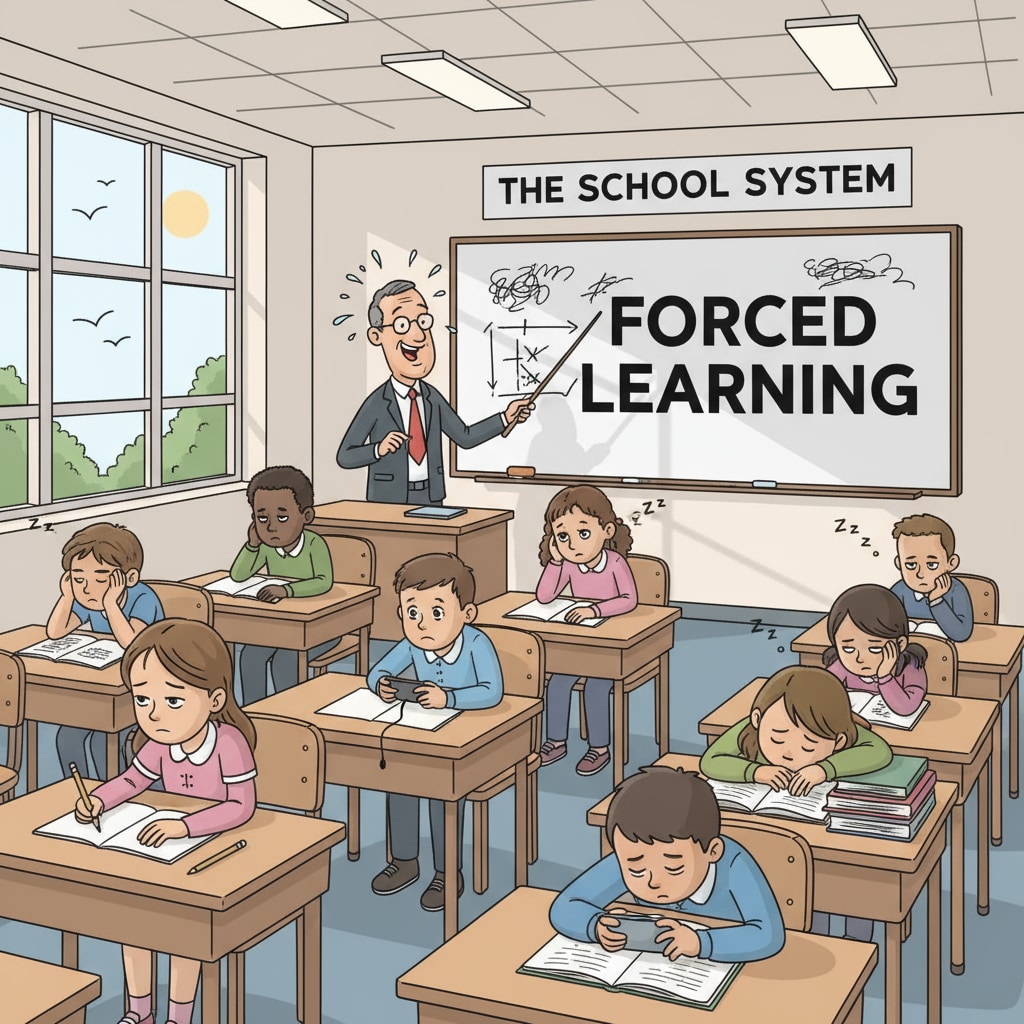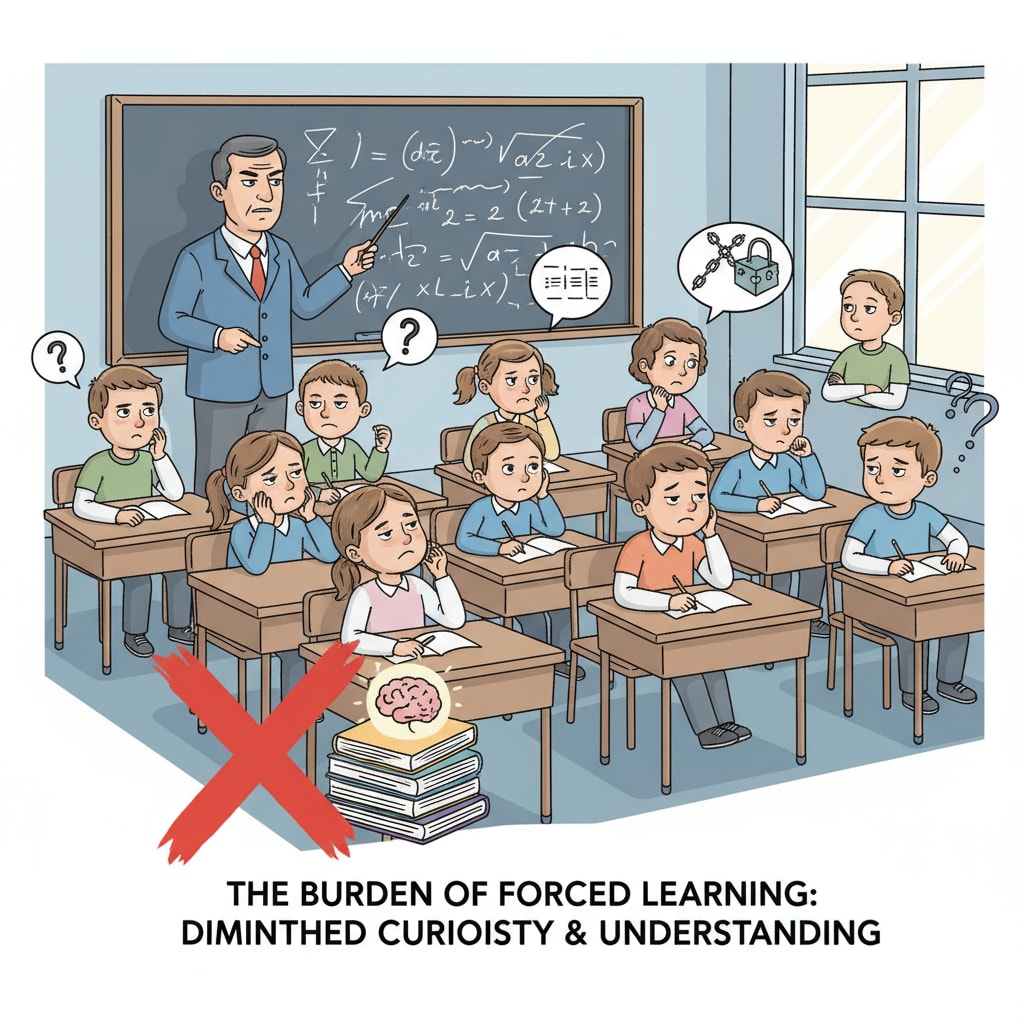The concept of “compulsory learning, school system, and educational effects” lies at the heart of the contemporary education debate. The modern education system, especially in the K12 context, is founded on a premise that seems straightforward yet is fraught with contradictions: the idea that we can force students to learn. This false belief has given rise to a series of complex issues within the school system, undermining the very educational effects we strive to achieve.

The Illusion of Compulsory Learning
At first glance, the concept of compulsory learning appears logical. Schools are institutions designed to impart knowledge, and making attendance mandatory seems like a step towards ensuring that every child receives an education. However, as Wikipedia’s entry on Education points out, learning is an inherently personal and active process. It cannot be forced upon someone like a set of rules. When we attempt to enforce learning, we are essentially treating students as passive recipients, which goes against the very nature of how the human brain absorbs and processes information.
Challenges in the School System
This misguided attempt at compulsory learning has led to numerous problems within the school system. For example, teachers often find themselves in a difficult position. They are tasked with making students learn a predefined curriculum, but without the ability to truly enforce understanding. As a result, many classrooms end up with students who are physically present but mentally disengaged. This lack of engagement not only affects individual students’ educational growth but also has a ripple effect on the overall educational environment. Additionally, the pressure to make students meet certain learning targets can lead to a one-size-fits-all teaching approach, neglecting the diverse learning styles and paces of students. According to Britannica’s education overview, this can significantly hamper the educational effects that schools aim to achieve.

Another consequence is the high dropout rates in some educational systems. When students feel that they are being forced to learn things that do not resonate with them, they may choose to disengage completely. This not only represents a failure in individual educational development but also a waste of resources for the entire school system.
Readability guidance: The issues of compulsory learning, its impact on the school system, and educational effects are complex. By highlighting the problems in short paragraphs and using examples, we can better understand the situation. We should also note that passive learning approaches due to forced learning are counterproductive, and a more student-centered approach is needed to improve educational outcomes.


